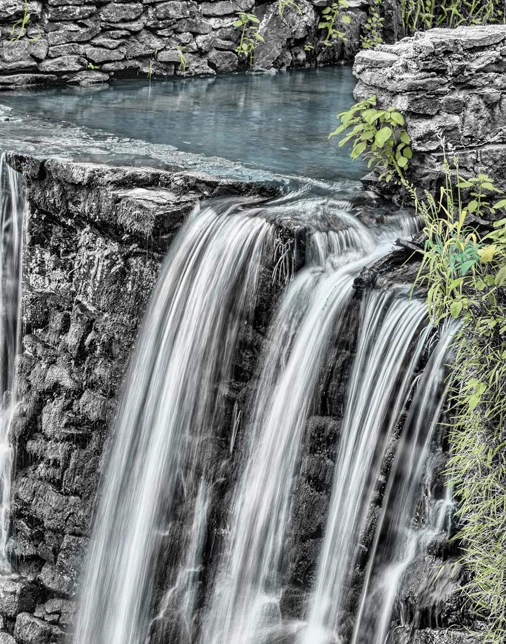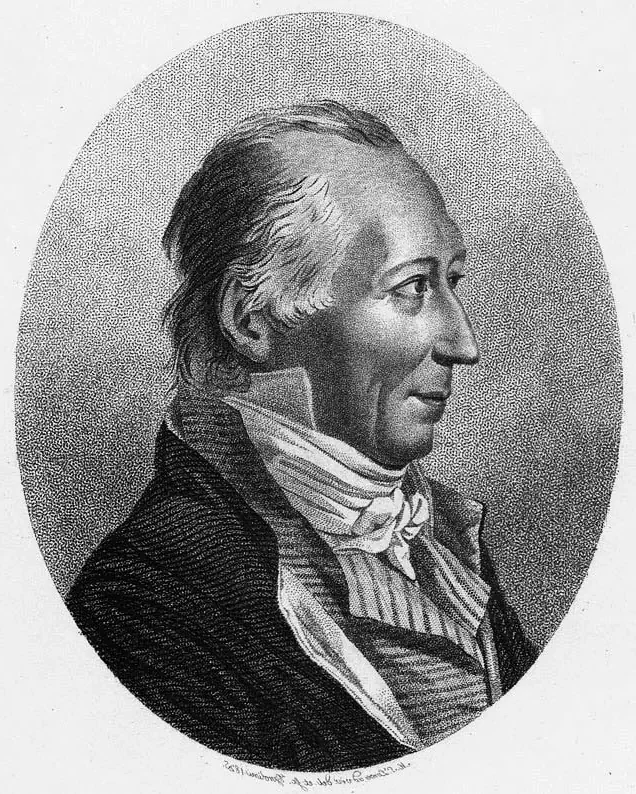Flow Velocity Empirical Formulae
Flow velocity based on observation or experience
Since the earliest time, people have needed to know how much water could flow through an open channel or pipe. Knowing this allowed them to know the size of pipes or channels required to pass the required flow. This might be to allow water to irrigate crops or to supply drinking water to a city. The Romans knew that to allow flow along their aqueducts, these structures are required to slope in the direction of the flow. They probably carried out tests to make sure sufficient water would flow through the aqueducts channel.
The First Mathematicians
Antonia Castelli (1578 – 1643) was an Italian mathematician and a student of Galileo. He took the name Benedetto when he joined the Benedictine order in 1595. His is best known for his work “Della misura delle acque correnti” meaning “On the measurement of running water” published in 1629 in Rome. The book was responsible for the initiation of modern hydrodynamics.
Some of the first mathematicians to develop hydrodynamics were Leonhard Euler (1707 – 1783) and Daniel Bernoulli (1700 – 1782), both Swiss. Euler and Bernoulli derived equations of continuity and conservation of momentum of fluid flow. This became known as the Bernoulli equation and considered to be a “statement of conservation of energy”. His equation showed that when fluid flows through a restriction, there is a pressure drop in the fluid. This “Bernoulli effect” causes the velocity of the fluid to increase.
Cornelis Velsen (1703–1755)
In 1749 the Dutch hydraulics engineer, Cornelis Velsen published his great work on river management “Rivierkundige Verhandeling”, (River protection discourse). He came to the conclusion that the velocity of flow should be proportional to the square root of the slope. To allow water to start to flow, the surface needs to slightly raised. The water flows faster the higher the surface rises. To put this another way, the water velocity increases as the slope of the surface increases. The slope is fundamental to allow water to flow. Therefore, the angle of the slope will determine the velocity of the water.
Cornelis did not have access to modern digital surveyors’ equipment or any satellites to obtain a GPS data. So how would he have carried out his experiments? I haven’t been able to find any documents that demonstrate how Velsen carried out his observations. Or his methods to determine the relationship between velocity and slope. However, the following is an assumption to an experiment that he may have carried out:
Albert Brahams (1692–1758)
During Christmas of 1717 a flood occurred in the coastal area in the Netherlands, and Germany. Albert Brahms was a German engineer, elected as a dike judge in 1718. In 1754 – 1757 he published a two-volume book on dike maintenance. This was “Anfangsgründe der Deich und Wasser-Baukunst”, (Principles of Dike and Aquatic Engineering). He is responsible for keeping the first records of tide levels on the North Sea coast of Germany. Brahms was also responsible for an equation that defined the relationship between the cross-sectional area of a channel, the wetted perimeter and the hydraulic radius. His equation to determine the hydraulic radius is as follows:
Antoine de Chézy (1718 – 1798)
The French engineer and Hydraulician Antoine de Chézy was a professor and eventually director of École des Ponts et Chassées (French School of Bridges and Highways). He was involved producing calculations to optimize the resistance of the structures for work at Trilport in 1757 and Mantes-la Jolie in 1764. Commissioned by King Louis XV to bring water of the Yvette River into Paris in 1769. This was to provide a water supply to the city. His first and most lasting equation was resistance in uniform open channel flow. (Antoine de Chézy image by Louis Jean Desprez, CC0, via Wikimedia Commons)
Pierre Louis Georges Du Buat (1734 – 1809)
The French military engineer Pierre Louis Georges Du Buat derived the formulae for the discharge of fluids from pipes and open channels. In 1776, he began studying hydraulics and in 1779 published the first edition of “Principes d’hydraulique”. A second volume published In 1786 covered experimental practice. Appointed lieutenant du roi (Lieutenant King) by 1787, after having risen to the rank of colonel. During the French Revolution, he lost his properties and fled with his family to Belgium in 1793 and later to Germany. Du Buat proposed the formula for the average velocity.
Johann Albert Eyetelwein (1764 –1848)
Johann Albert Eyetelwein was a Prussian hydraulics engineer. After a short career in the Prussian artillery, he studied civil engineering and qualified in 1790 when he left the army and entered the Prussian civil service. In 1793, he published a collection of problems in applied mathematics for surveyors and engineers. 1801 saw him derive a formula for open channel velocity, which was similar to the Chézy equation, but with the Coefficient of 50.9.
Julius Lugwig Weisbach (1806 – 1871)
Julius Lugwig Weisbach was a German mathematician who wrote 59 papers on mechanics, hydraulics, surveying and mathematics. Weisbach collaborated with Henry Darcy on the Darcy – Weisbach friction coefficient. They also developed a formula for the resistance of flow through closed pipes.
Henry Darcy (1803 – 1858)
Henry Darcy was a French engineer well known for Darcy’s Law, his formula for calculating the flow of water through an aquifer. In 1856, he published a report “The Public Fountains of the City of Dijon”. This report included experiments with pipes that resulted in the Darcy – Weisbach friction coefficient (f). Their friction coefficient was not a constant value, but depended on the pipe diameter, roughness of the pipe wall, kinetic viscosity and velocity of the fluid flow.
Henri Émile Bazin (1829 – 1917)
Henri Émile Bazin worked as an assistant to Henry Darcy. He conducted experiments to develop his hydraulic work, focusing particularly on the flow of water in open channels. His formula proposed in 1897 relates to the Chézy coefficient “C”, the hydraulic radius and channel roughness “k”. He observed that the value of “C” increased with an increase in slope, but concluded that this increase was too small to be provided for in the equation.
Emile Oscar Ganguillet (1818 – 1894)
Emile Oscar Ganguillet was a Swiss engineer, and studied at the Progymnasium in Biel, Obergymnasium in Bern. In 1841, he worked on the construction of bridges, roads, and railways in France. He was appointed as district engineer in Delémont in Switzerland in 1847. In 1858 as Chief engineer he oversaw bridge and hydraulic structures including the Juragas water connection. In 1869 with Wilhelm Kutter he published formulae for the uniform movement of water in canals and rivers.
After an apprenticeship as a surveyor, Willhelm Rudolph Kutter (1818 – 1888), entered the service of the Kt. Bern around 1835, initially in road construction and forestry; In 1851-88 he was secretary of the Dep. For public Buildings. Willhelm recognized the importance of a proper recording of friction losses in rivers and developed together with Cantonal Engineer Emile Ganguillet a formula for the movement of water in rivers and canals (1869 published for the first time). This friction approach for free-drain drains has been world-famous for a long time.
Phillipe Gaspard Gauckler (1826 – 1905)
Phillipe Gaspard Gauckler was a German civil engineer trained in Strasbourg. He entered the Corps of Engineers of Roads and Bridges in 1848. In 1881, he became the Chief engineer on the French Railways. 1886 saw him promoted to Inspector General of Roads and Bridges. Gauckler proposed two formulae for use in different slope ranges, based on experiments by Darcy and Bazin. Gauckler also contributed to the Gauckler Manning Strickler Formula developed in 1868.
The values of α and β are coefficients determined experimentally
Robert Manning (1816 – 1897)
In 1889 Robert Manning wrote his scientific paper “On the flow of water in open channels and pipes”. The original Manning’s formula was in the paper. This formula is mostly referred to as the Manning’s formula, but should be more correctly called the Gauckler Manning formula.
Manning’s first formula however was more popular. William King (1851 – 1929) a Scottish engineer that brought about widespread acceptance of this and Manning’s coefficient “C”. The Manning’s coefficient was the inverse of Wilhelm Rudolf Kutter’s (1818 – 1888) coefficient.
Albert Strickler (1887–1963)
Albert Strickler was a Swiss mechanical and hydraulic engineer who studied mechanical and electrical engineering at the Swiss Federal Institute of Technology in Zurich.
He was one of the authors of the 1868 Gauckler Manning Strickler formula. In 1918, he was elected Section Chief of the Federal Office for Water Management. It is during this period that he developed his formula for velocity. Strickler is also responsible for correlating his coefficient with the roughness of gravel bed rivers. The Strickler equation could be used to determine the Manning’s roughness value “n” based on the Strickler value for the median size of the bed material in millimetres.
To demonstrate the development of the flow velocity empirical formulae, I have created a calculation sheet that shows how the equations developed over the period. Click on the image to display the calculation sheet.
Sources Used and Further Reading
Other Related Pages
- Irish Hydraulics Engineer - Robert Manning
- Science - Introductory page
- Technology - Introductory page
- Engineering - Introductory page
- Mathematics - Introductory page















